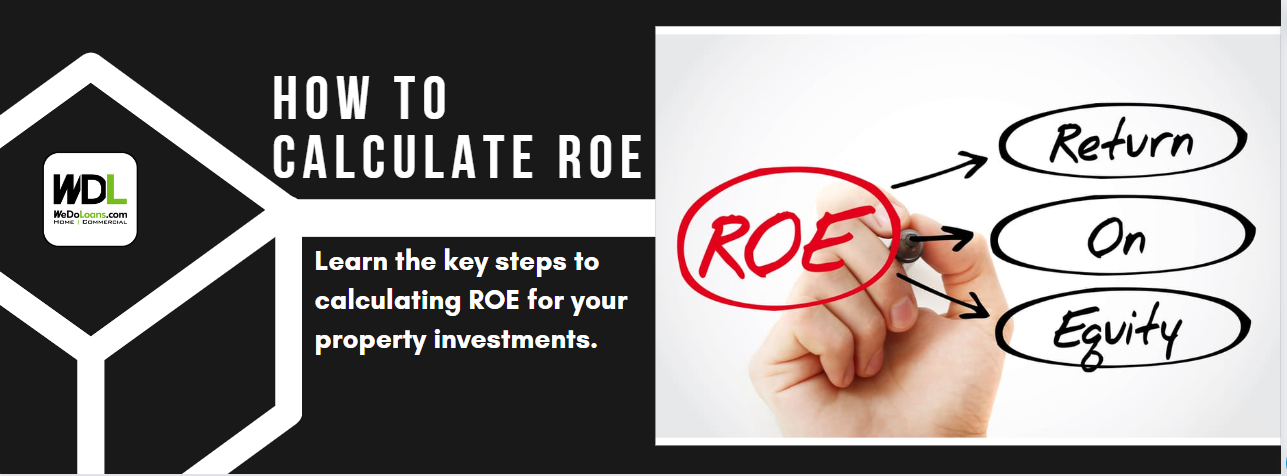
Return on Equity (ROE) is a financial ratio that assesses the profitability of a real estate investment relative to the shareholders’ stake. It measures how effectively capital is utilized to generate profits, offering valuable insights into the performance of potential or existing properties. Understanding how to calculate and interpret ROE is crucial for any real estate investor.
What Is Return on Equity?
Return on Equity is a measure of financial performance, illustrating the relationship between a property’s profit and the shareholders’ equity. Sometimes called Return on Net Assets (ROA), it reveals the profit generated relative to the investment cost.
In essence, ROE shows how well equity is managed. Higher ROE reflects efficient capital management, signaling an investment’s health and profitability.
How to Calculate ROE for a Property
Calculating ROE involves two key figures: net income and shareholders’ equity.
- Net Income: This represents the property’s total profit after accounting for all revenue and expenses, including rent, fees, repairs, management, taxes, and insurance.
- Shareholders’ Equity: This encompasses all the equity stakeholders have in a property, such as the initial cash investment and any equity gained from improvements, appreciation, or loan repayment.
The difference between ROE and ROI (Return on Investment) lies in how equity is treated. ROE accounts for dynamically changing equity, while ROI considers only the initial investment and improvements.
Formula for ROE Calculation
The formula to calculate ROE is:
ROE = (Net Income / Shareholders’ Equity) x 100%
The result is expressed as a percentage.
Example of ROE Calculation
Consider a property bought for $200,000, with a $50,000 down payment, a $150,000 mortgage, and $20,000 in renovations. The property yields an annual net income of $10,000.
- Shareholders’ Equity: $70,000 ($50,000 + $20,000)
- Net Income: $10,000
ROE: ($10,000 / $70,000) x 100% = 14.3%
After several years, appreciation could increase the property’s value to $250,000, boosting equity to $120,000. If net income rises to $12,000, ROE would be recalculated as follows:
ROE: ($12,000 / $120,000) x 100% = 10%
What Is a Good ROE in Real Estate?
“Good” ROE varies based on the property type and market conditions. High-value properties in major cities often yield lower ROE than smaller properties in rural areas. Generally, investors aim for a 2-5% ROE, recognizing that high-value properties tend to have lower returns over time.
Advantages of Using ROE
- Performance Indicator: It measures how effectively equity capital is managed relative to invested capital.
- Comparison Tool: It helps compare the profitability of different properties.
- Decision-Making Guide: It informs whether to buy, sell, or hold properties.
Limitations of ROE
- Debt Distortion: Excessive debt can skew ROE by inflating returns, especially with favorable interest rates or balloon payments.
- Limited Scope: ROE doesn’t account for risk factors or predict future performance. It also overlooks long-term appreciation.
- Market Sensitivity: Property location and market conditions impact ROE, making comparisons between properties or markets challenging.
Using ROE for Investment Decisions
ROE is a vital metric for real estate investment decisions. It can help evaluate the performance of property managers and the overall health of current and potential investments.
Why Understanding ROE Matters
Knowing how to calculate and interpret ROE is essential for strategic decision-making, whether restructuring finances or refining operational management. Ultimately, ROE reveals how well equity is being employed to generate returns.
Conclusion
If you’re in commercial real estate, understanding ROE is crucial. It provides a clear picture of the profitability of your investments relative to their equity value. By calculating and leveraging ROE, you can make more informed decisions that align with your investment goals.
